INSIDE LOOK AT THE 2018 KTM 250 FUEL-INJECTED TWO-STROKE ENGINE
Click on images to enlarge
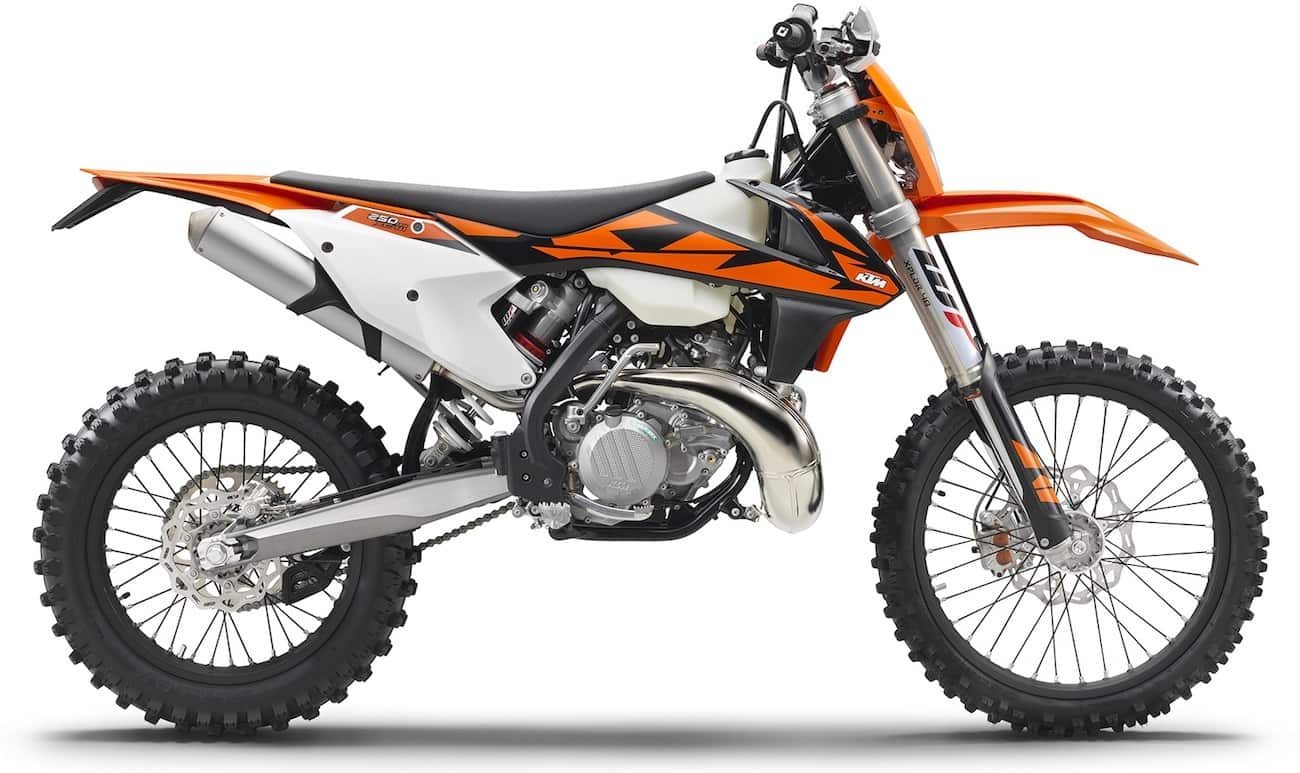 For the time being the fuel-injected KTM fuel-injected two-stroke engine will only come on one bike—the 250XC-W TPI off road model. TPI stands for Transfer Port Injection. MXA doesn’t expect the 250XC-W TPI engine to be powerful, but it will burn clean. The plan is for the 250XC-W TPI to meet the new Euro-4 emission standards. Then the technology can trickle down to other models. The smaller displacement engines will have a much tougher time complying with the emission standards than bigger engines—like the 250.
For the time being the fuel-injected KTM fuel-injected two-stroke engine will only come on one bike—the 250XC-W TPI off road model. TPI stands for Transfer Port Injection. MXA doesn’t expect the 250XC-W TPI engine to be powerful, but it will burn clean. The plan is for the 250XC-W TPI to meet the new Euro-4 emission standards. Then the technology can trickle down to other models. The smaller displacement engines will have a much tougher time complying with the emission standards than bigger engines—like the 250.
KTM’s 250cc engine is known to be the most powerful and most competitive two-stroke engine in the world. And now things get even better. The 2018 KTM 250XC-W TPI boasts a newly developed and patented TPI (transfer port injection) fuel injection system – a truly unique feature when it comes to two-stroke race bikes. The patented EFI system with two injectors into the transfer ports of the cylinder makes the engine much smoother to ride and reduces the fuel consumption drastically, a global game changer in terms of technology.
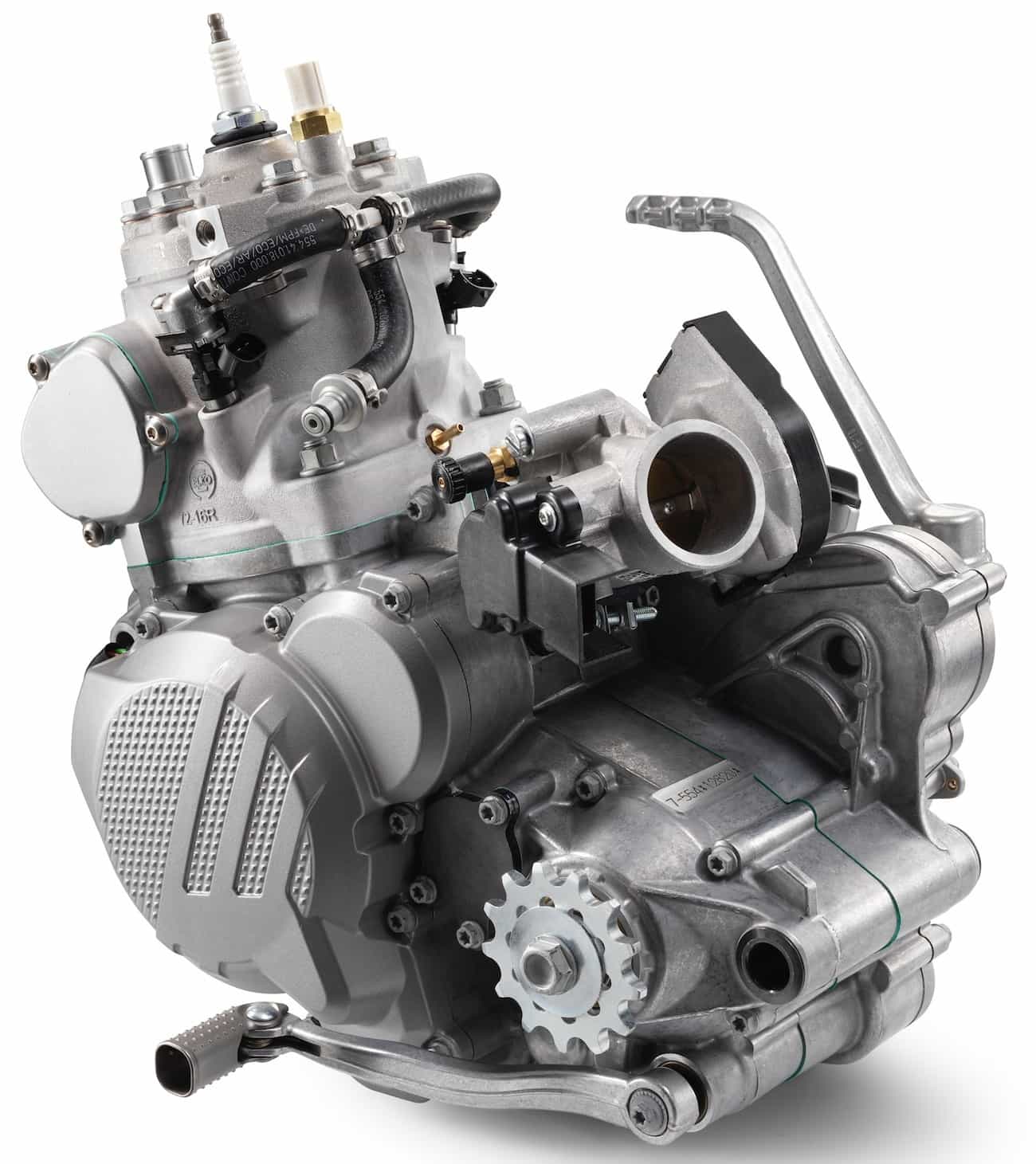 Ignore what looks like a fuel injection throttle body. This does not have anything to do with injecting fuel into the KTM engine. It is simply a way to control the flow of air into the engine. Instead, look at the fuel line hanging off the back of the cylinder. One goes to the gas tank and the other two go to fittings in the cylinder’s transfer ports. The two hoses on each side of the cylinder connect to the injector nozzles, which have electrical fittings that go to the ECU.
Ignore what looks like a fuel injection throttle body. This does not have anything to do with injecting fuel into the KTM engine. It is simply a way to control the flow of air into the engine. Instead, look at the fuel line hanging off the back of the cylinder. One goes to the gas tank and the other two go to fittings in the cylinder’s transfer ports. The two hoses on each side of the cylinder connect to the injector nozzles, which have electrical fittings that go to the ECU.
Gone is the hassle of jetting, premixing gas and difficult starting. It was time to give a new push to two-stroke technology and prove two-stroke s have a bright future. The KTM 250 XC-W TPI is leading the charge as the most advanced Ready to a Race two-stroke.
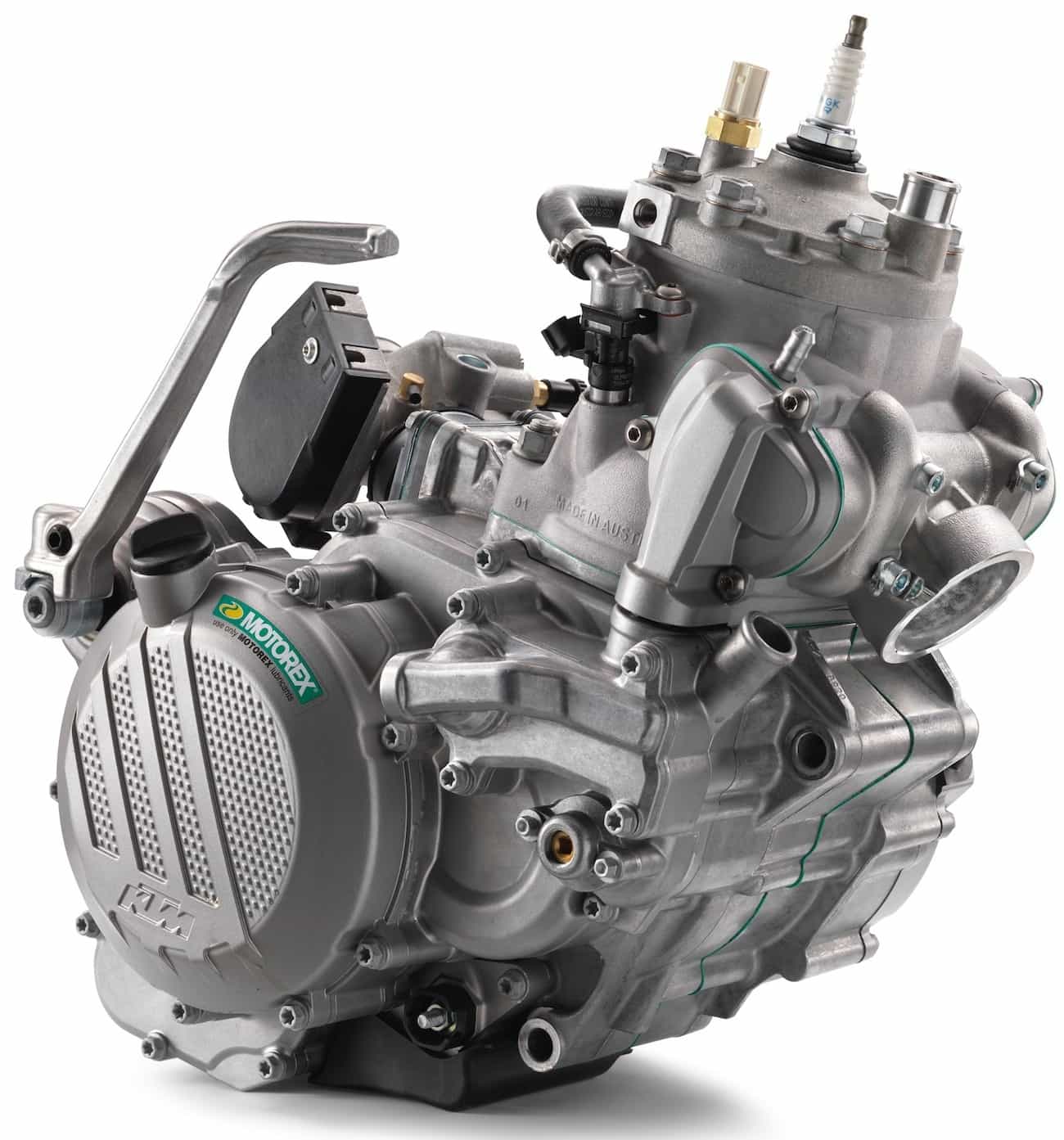 As with all two stroke engines, air is drawn into the lower end when the piston goes up and then pumped up to the combustion chamber, via transfer ports, when the piston goes down. The KTM 250 TPI engine also has a power valve that raises and lowers a flapper valve in the exhaust port to help manage power output. Fuel is injected directly into the transfer port, so that the upward velocity of the air being pump upwards will mist it into the combustion chamber. The oil is also injected, not premixed.
As with all two stroke engines, air is drawn into the lower end when the piston goes up and then pumped up to the combustion chamber, via transfer ports, when the piston goes down. The KTM 250 TPI engine also has a power valve that raises and lowers a flapper valve in the exhaust port to help manage power output. Fuel is injected directly into the transfer port, so that the upward velocity of the air being pump upwards will mist it into the combustion chamber. The oil is also injected, not premixed.
2018 250 XC-W TPI HIGHLIGHTS
•New 249cc two-stroke engine fitted with a patented TPI fuel injection system for perfect fueling at any altitude, no premixing and reduced fuel consumption while still living up to the standard of a KTM 2-stroke.
•New Cylinder with two injectors placed in the rear of the transfer ports for excellent downstream atomization of fuel.
•New EMS featuring a new ECU controlling ignition timing and fuel based on information from 5 sensors reading intake and ambient air pressure, throttle position, oil and water temperature for optimized engine response.
•New 39mm throttle body by Dell’Orto features a butterfly valve controlled by a twin cable throttle.
•New electronic oil pump feeds oil from the 700cc oil tank to intake to ensure a perfect fuel-oil mix under any condition while reducing smoking by 50% for up to 5 tanks of fuel.
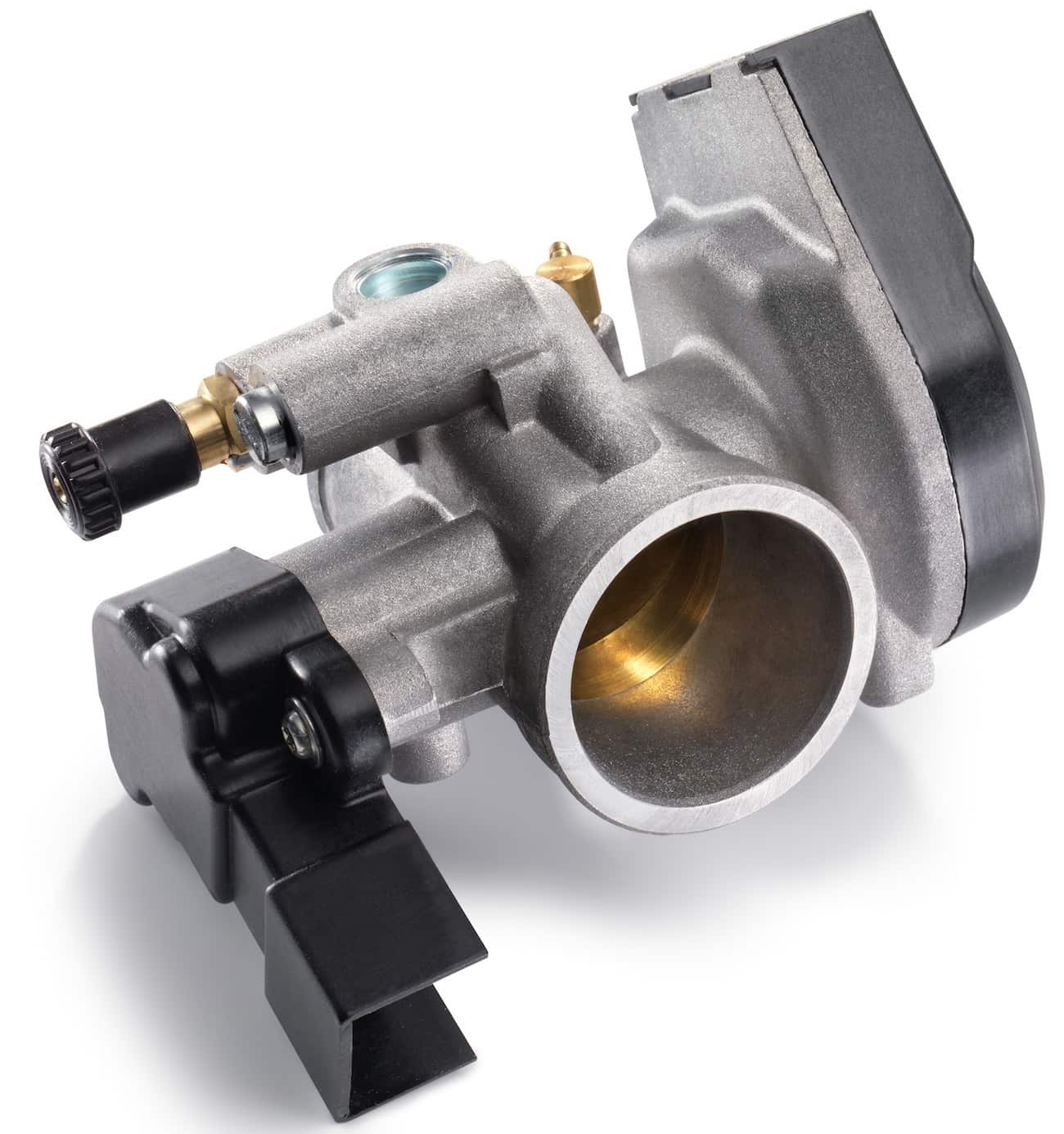 The throttle body just controls how much air rushes into the engine via a butterfly valve. It works just like the throttle on an internal combustion engine, but there is no fuel in it, no float bowl, no jets, no needles and no nozzles. The throttle body is made by Dellorto.
The throttle body just controls how much air rushes into the engine via a butterfly valve. It works just like the throttle on an internal combustion engine, but there is no fuel in it, no float bowl, no jets, no needles and no nozzles. The throttle body is made by Dellorto.
•Updated WP Xplor 48 upside-down split front fork with new outer tubes for more sensitivity, less stiction and reduced weight. Revised settings are stiffer as well.
•Updated WP Xplor PDS rear suspension features stiffer settings while still offering the progressive feel and excellent bottoming resistance only PDS can provide.
•New radiator guards provide better airflow in muddy conditions.
•Engine cases feature a compact shaft arrangement for better mass centralization.
•Cylinder with twin-valve controlled power valve for smooth power that can be adjusted within seconds for different track conditions.
•Revolutionary lateral counter balancer reduces engine vibrations for less rider fatigue at the end of the moto.
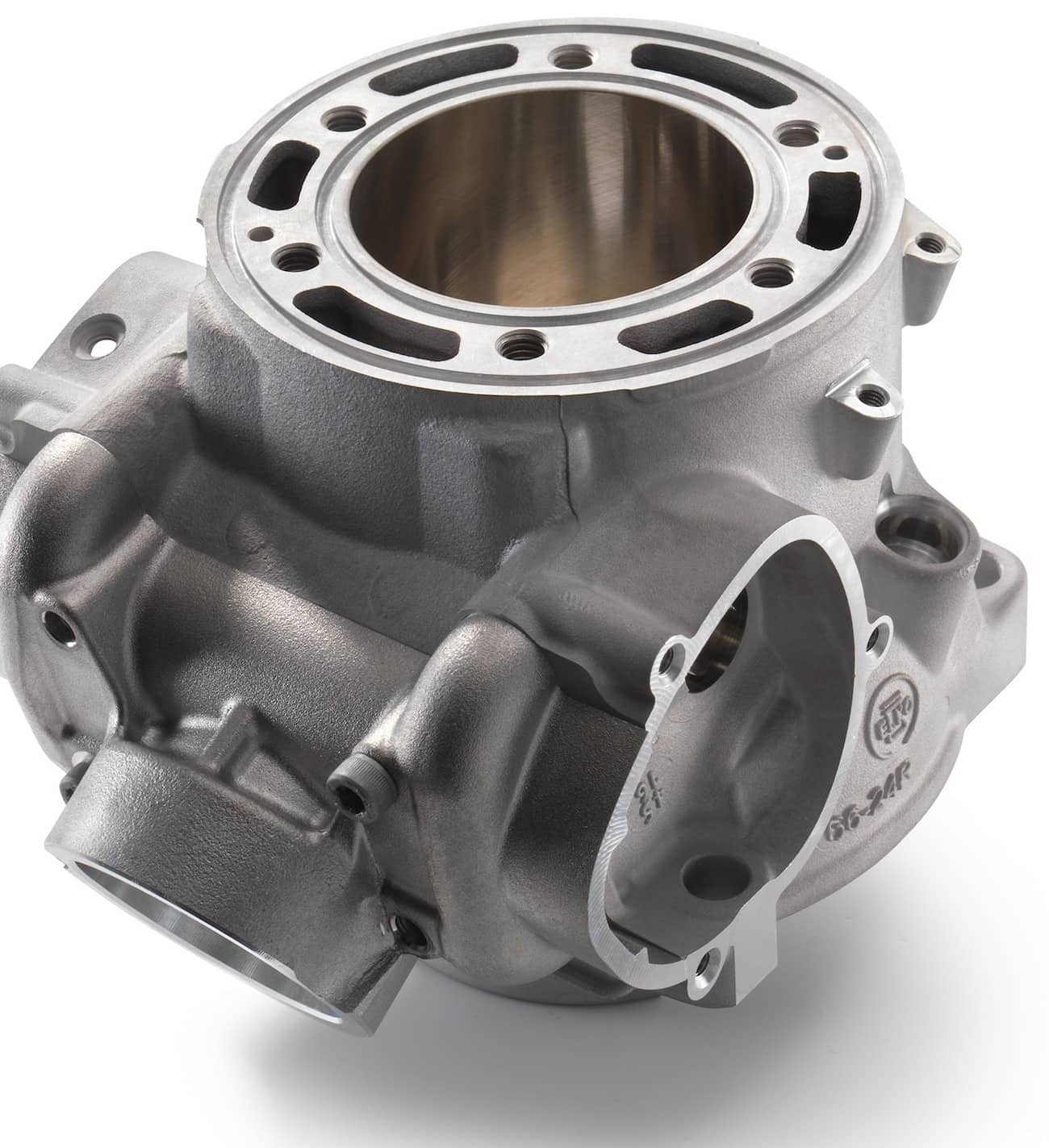 In this view of the cylinder, you can see the power valve housing with the fuel injection port behind it.
In this view of the cylinder, you can see the power valve housing with the fuel injection port behind it.
•Six-speed wide ratio transmission is perfectly suited for off-road duty
•Hydraulically operated DDS clutch features a damping system for better traction and durability.
•Lightweight Chromoly steel frame provides high torsional rigidity with less longitudinal stiffness resulting in excellent handling and energy absorption
•PDS Shock mounting geometry is matched to the aluminum swingarm with a centered location for nearly symmetrical loads to the swingarm.
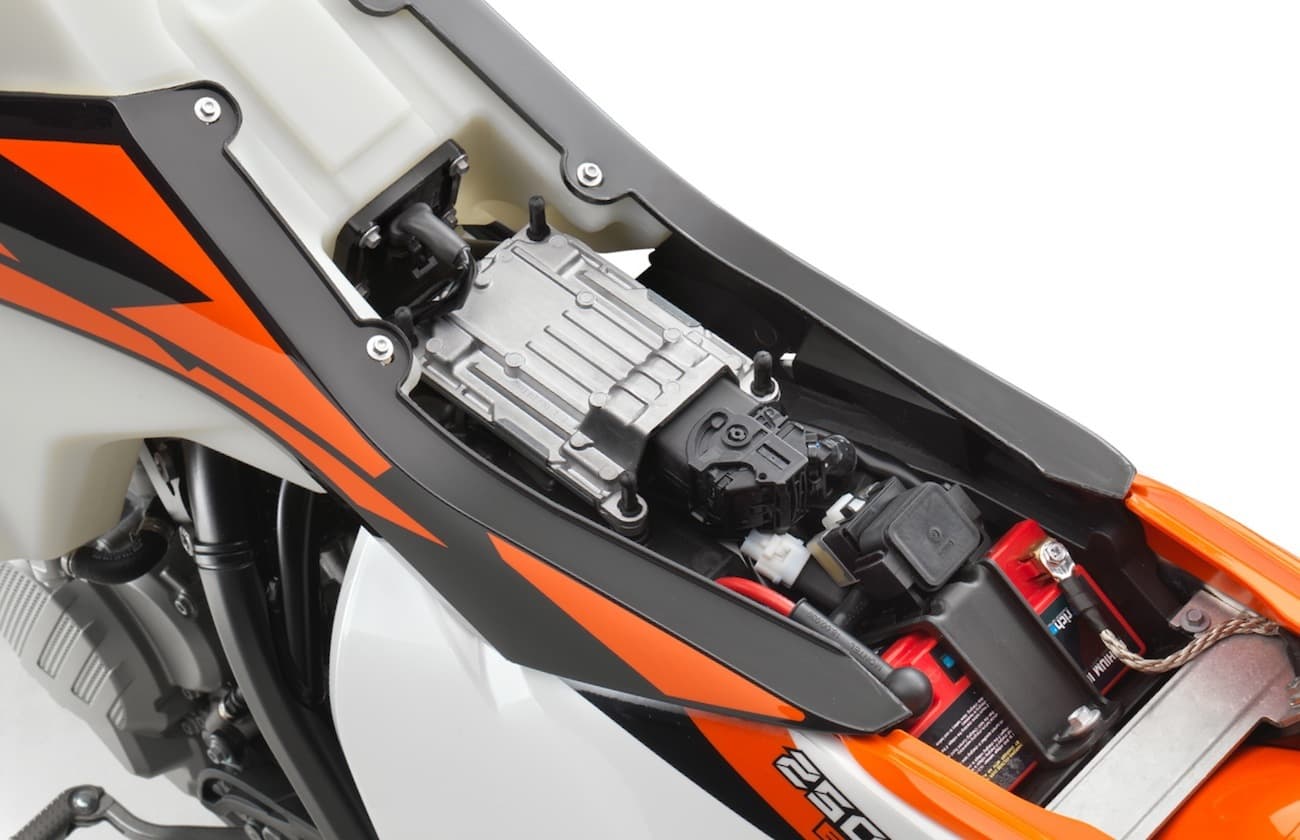 The Synerjet ECU controls everything on the TPI engine via five sensors—intake air pressure, oil temperture, barometric pressure, throttle position and water temperature. The battery powers the electric starter.
The Synerjet ECU controls everything on the TPI engine via five sensors—intake air pressure, oil temperture, barometric pressure, throttle position and water temperature. The battery powers the electric starter.
•Forged aluminum triple clamp with handlebar positions and a 22mm offset for precise handling.
•ODI grips that feature a lock-on design for the left grip and a vulcanized grip on the throttle side.
•“No Dirt” footpeg design keeps the pegs pivot from becoming clogged, ensuring the footpeg is always in the correct position.
•CNC machined hubs, high-end Giant rims and Dunlop tires for maximum strength and traction.
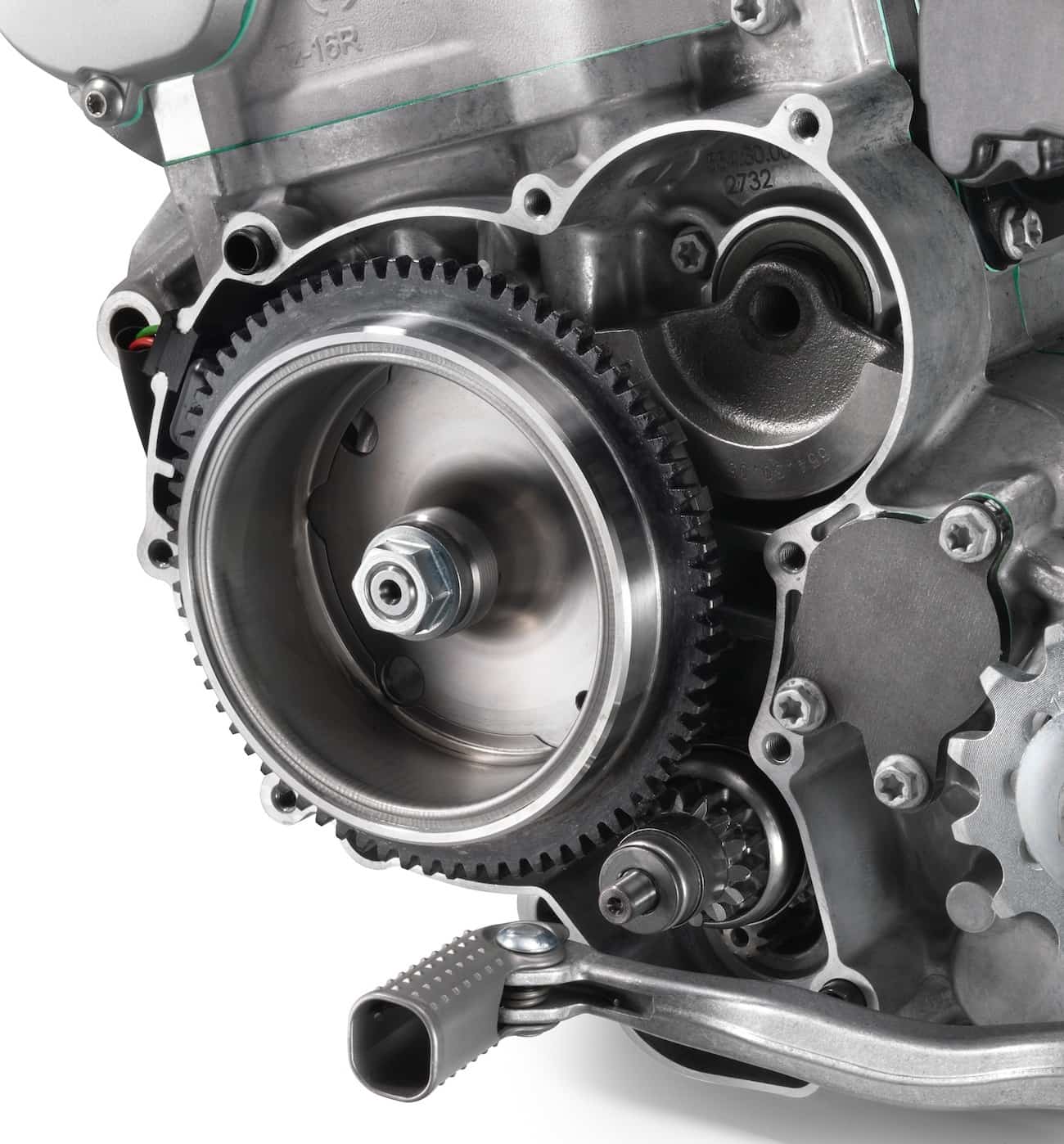 The TPI engine requires a constantly supply of power, so the flywheel functions as part of the alternator. This takes the load off the battery and produced enough power to run the ECU, sensors, spark plug, diagnostics and fuel pump.
The TPI engine requires a constantly supply of power, so the flywheel functions as part of the alternator. This takes the load off the battery and produced enough power to run the ECU, sensors, spark plug, diagnostics and fuel pump.
•Airbox and filter design provides maximum performance with fast “no tools” air filter changes.
•Bodywork with perfect ergonomics and contact points for maximum control and comfort.
•2.4 gallon see-through polyethylene tank provides the range needed from a true Ready to Race enduro bike.
•“No Dirt” shift lever prevents dirt from fouling the lever joint to ensure proper shifting in any condition.
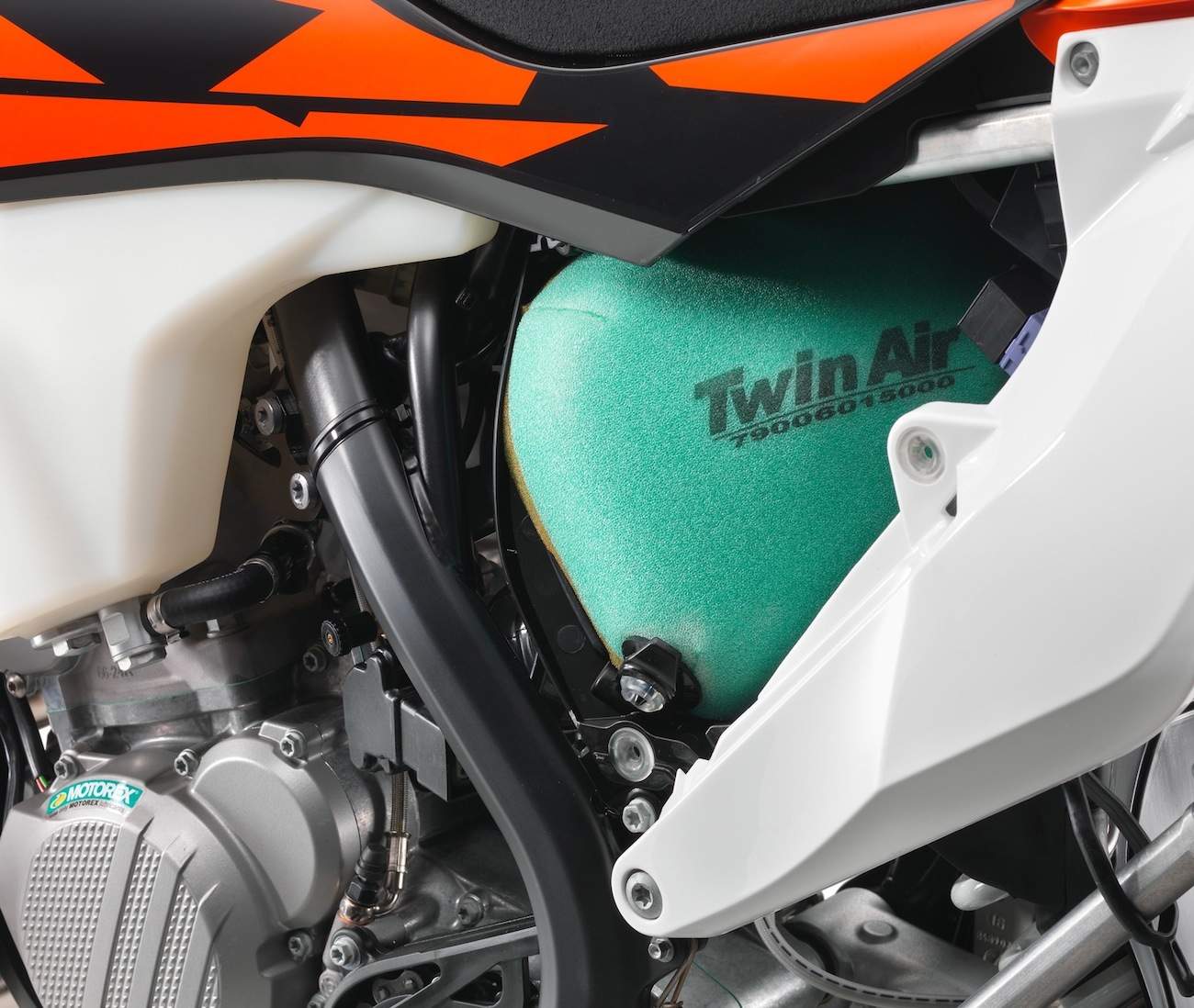 The airbox is the standard issue KTM no-tools design, but it is surrounded by electronics and sensors. There will be a 300cc version in Europe in 2018. MXA is flying to Austria on Tuesday to ride the fuel-injected two-stroke for the first time at Erzberg.
The airbox is the standard issue KTM no-tools design, but it is surrounded by electronics and sensors. There will be a 300cc version in Europe in 2018. MXA is flying to Austria on Tuesday to ride the fuel-injected two-stroke for the first time at Erzberg.



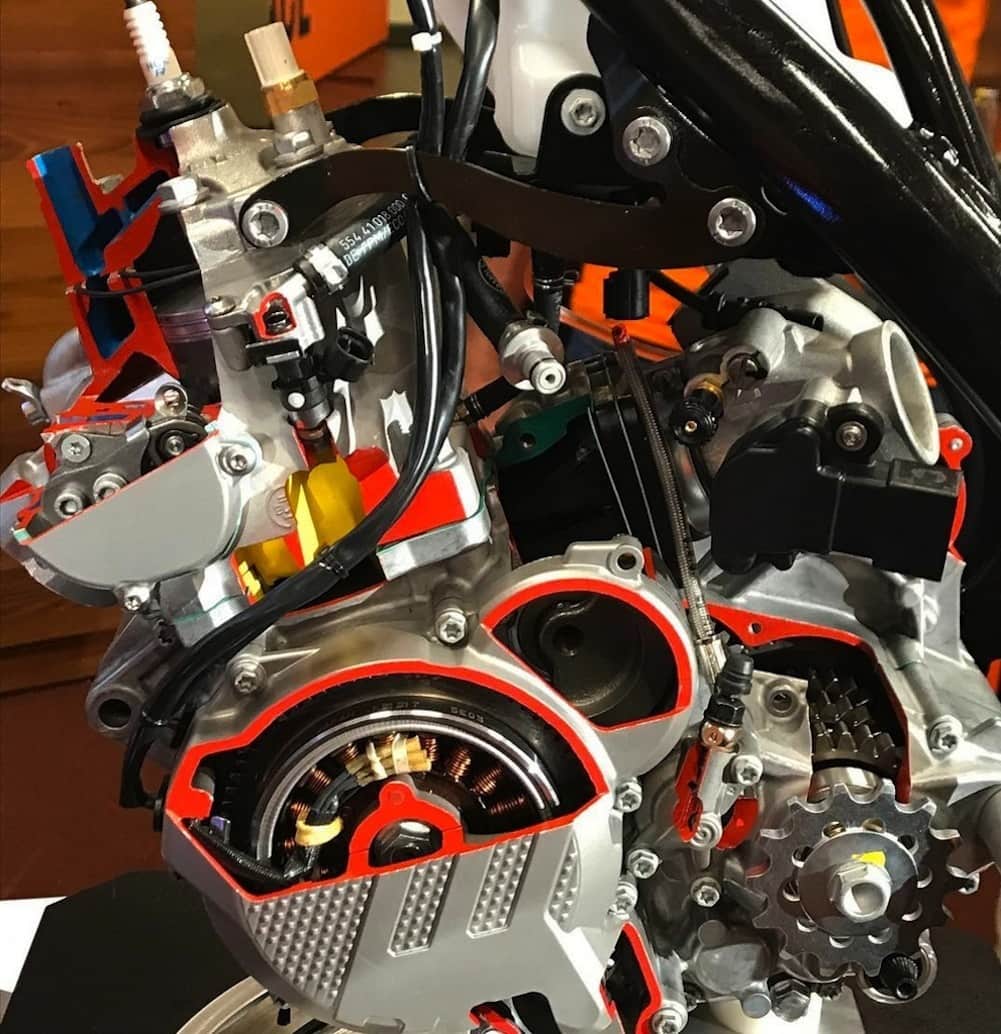



Comments are closed.